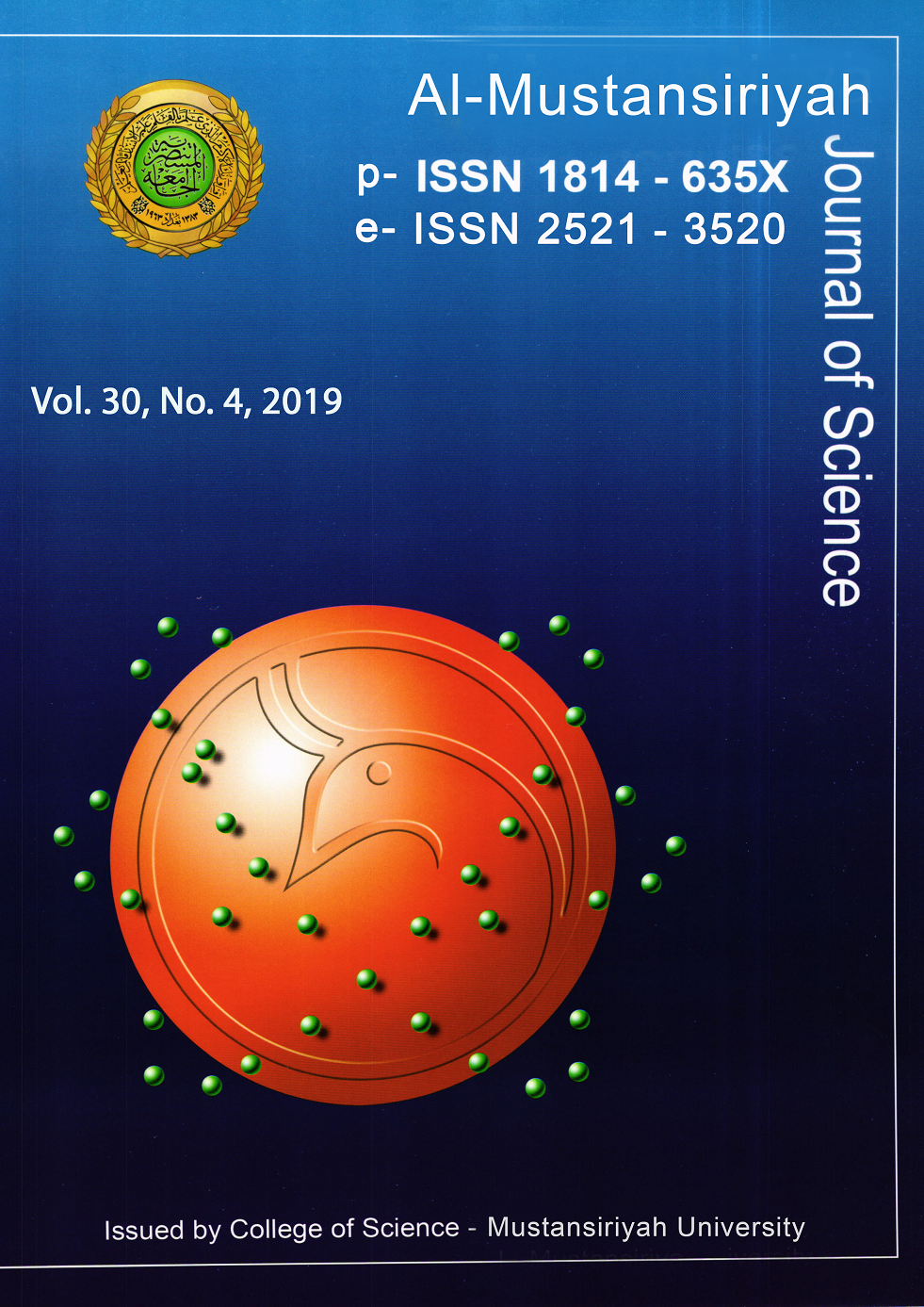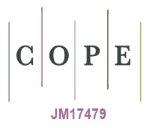OPACITY INFLUENCED INCONSTANT METHOD FOR 3D HOLOGRAPHIC PYRAMID RENDERING
DOI:
https://doi.org/10.23851/mjs.v30i4.597Keywords:
3D visualization, depth cue, Phong shading, 3D holographic display, surface Rendering.Abstract
The rapid growth of computer graphics in human daily life has inspired researchers to maximize image understanding and discover new methods for visualizing 3D objects. However, the image quality is constrained by the depth cue limitations of 3D objects produced by 3D displays. The advent of the holographic hologram pyramid display offers better image quality due to its ability to visualize 3D data with satisfactory depth. In this paper, we present a new visualization method named the “opacity influenced inconstant method” that exploits the custom surface rendering technique to enhance understanding of massive 3D objects for a hologram pyramid display. An algorithm is developed by adding an opacity variable and manipulating the intensity and position of the other variables to enhance the depth cues of a 3D object. The opacity value has the ability to show the inner structure of an object to be visualized if it is available. Our results show significant enhancement on the depth cues of the 3D object that presents as a hologram floating inside a transparent pyramid. The results of a survey conducted on computer graphics students shows that the quality of the hologram was preferred when it was compared to the previous method. In addition, the depth cues of the 3D object were reported to be enhanced by the opacity influenced inconstant method when compared to the previous study and standard shading.Downloads
References
M. Teittinen, "Depth cues in the human visual system," vol. 1, 1993.
L. Wang and A. E. Kaufman, "Lighting system for visual perception enhancement in volume rendering," IEEE transactions on visualization and computer graphics, vol. 19, pp. 67-80, 2013. [CrossRef] [PubMed]
N. Kim, A.-H. Phan, M.-U. Erdenebat, M. Alam, K.-C. Kwon, M.-L. Piao, et al., "3D display technology," Display and Imaging, vol. 1, pp. 73-95, 2014.
C. Vienne, L. Sorin, L. Blondé, Q. Huynh-Thu, and P. Mamassian, "Effect of the accommodation-vergence conflict on vergence eye movements," Vision Research, vol. 100, pp. 124-133, 2014. [CrossRef] [PubMed]
V. A. Ezhov, "Distant binocular filters for full-resolution autostereoscopic viewing and for single-aperture stereo glasses," Journal of Display Technology, vol. 10, pp. 114-119, 2014. [CrossRef]
Y. Zhu and T. Zhen, "3D multi-view autostereoscopic display and its key technologies," in Information Processing, 2009. APCIP 2009. Asia-Pacific Conference on, Shenzhen, China, 31-35, 2009. [CrossRef]
S. Reichelt, R. Häussler, G. Fütterer, and N. Leister, "Depth cues in human visual perception and their realization in 3D displays," in SPIE Defense, Security, and Sensing, 76900B-76900B-12, 2010. [CrossRef]
J. Geng, "Three-dimensional display technologies," Advances in optics and photonics, vol. 5, pp. 456-535, 2013. [CrossRef] [PubMed]
L. Zhang, Q. Sun, and Y. He, "Splatting lines: an efficient method for illustrating 3D surfaces and volumes," in Proceedings of the 18th meeting of the ACM SIGGRAPH Symposium on Interactive 3D Graphics and Games, San Francisco, CA, USA, 135-142, 2014. [CrossRef]
Q. M. S. Sarah, S. S. Puteri, M. Ramlan, and R. W. O. Rahmat, "3D Holographic Rendering For Medical Images Using Manipulates Lighting in a 3D Pyramid Display," Journal of Advanced Science and Engineering Research Vol, vol. 7, pp. 14-26, 2017.
D. Tiro, A. Poturiović, and N. Buzadjija, "The possibility of the hologram pyramid applying in the rapid prototyping," in 2015 4th Mediterranean Conference on Embedded Computing (MECO), 2015, pp. 25-30. [CrossRef]
D. F. McAllister, "Stereo and 3‐D Display Technologies," Encyclopedia of imaging science and technology, 2002. [CrossRef]
R. E. Patterson, "Human Factors of 3D Displays," Handbook of Visual Display Technology, pp. 1815-1822, 2012. [CrossRef] [PubMed]
M. Mikkola, A. Boev, and A. Gotchev, "Relative importance of depth cues on portable autostereoscopic display," in Proceedings of the 3rd workshop on Mobile video delivery, 2010, pp. 63-68. [CrossRef]
J. Cutting and P. Vishton, "Perceiving layout and knowing distances: The integration, relative potency, and contextual use of different information about depth. u: Epstein W," ed: Rogers S [ur.] Perception of space and motion, New York-San Diego, itd: Academic Press, 1995. [CrossRef]
V. De Silva, A. Fernando, S. Worrall, H. K. Arachchi, and A. Kondoz, "Sensitivity analysis of the human visual system for depth cues in stereoscopic 3-D displays," IEEE Transactions on Multimedia, vol. 13, pp. 498-506, 2011. [CrossRef]
N. S. Holliman, N. A. Dodgson, G. E. Favalora, and L. Pockett, "Three-dimensional displays: a review and applications analysis," IEEE Transactions on Broadcasting, vol. 57, pp. 362-371, 2011. [CrossRef]
M. Mehrabi, E. M. Peek, B. C. Wuensche, and C. Lutteroth, "Making 3D work: a classification of visual depth cues, 3D display technologies and their applications," in Proceedings of the Fourteenth Australasian User Interface Conference-Volume 139, 2013, pp. 91-100.
L. Yang, H. Dong, A. Alelaiwi, and A. El Saddik, "See in 3D: state of the art of 3D display technologies," Multimedia Tools and Applications, pp. 1-35, 2015. [CrossRef]
M. Agus, F. Bettio, A. Giachetti, E. Gobbetti, J. A. I. Guitián, F. Marton, et al., "An interactive 3D medical visualization system based on a light field display," The Visual Computer, vol. 25, pp. 883-893, 2009. [CrossRef]
H. Nishi, K. Matsushima, and S. Nakahara, "Rendering of specular surfaces in polygon-based computer-generated holograms," Applied optics, vol. 50, pp. H245-H252, 2011. [CrossRef] [PubMed]
H. Zhang, Y. Zhao, L. Cao, and G. Jin, "Three dimensional computer-generated holograms with shading effects based on a phase-only spatial light modulator," in ISPDI 2013-Fifth International Symposium on Photoelectronic Detection and Imaging, Beijing, China, 891310-891310-6, 2013, pp. 891310-891310-6. [CrossRef]
H. Zhang, Y. Zhao, L. Cao, and G. Jin, "Fully computed holographic stereogram based algorithm for computer-generated holograms with accurate depth cues," Optics Express, vol. 23, pp. 3901-3913, 2015. [CrossRef] [PubMed]
J. C. Sprott, Physics Demonstrations: A sourcebook for teachers of physics: Univ of Wisconsin Press, 2006.
R. Alves, L. Sousa, A. Negrier, J. M. Rodrigues, P. J. Cardoso, J. Monteiro, et al., "PRHOLO: Interactive Holographic Public Relations," presented at the Third International Conference on Advances in Computing, Communication and Information Technology - CCIT 2015, Birmingham, United Kingdom. April 2015, 124-128.
G. Pantoja, P. López, P. Ramírez, M. Campbell, D. Cabrera, and F. Quiñones, "Virtual Reincarnation of Mexican Norteño Representative Artist Using 'Holographic'Projection and CG Technologies," Procedia Computer Science, vol. 75, pp. 408-412, 2015. [CrossRef]
M. Figueiredo, L. Sousa, P. Cardoso, J. Rodrigues, C. Goncalves, and R. Alves, "Learning technical drawing with augmented reality and holograms," in Proceedings of the 13th International Conference on Education and Educational Technology, Lisbon, Portugal, 11-20, 2014.
A. Gooch, B. Gooch, P. Shirley, and E. Cohen, "A non-photorealistic lighting model for automatic technical illustration," in Proceedings of the 25th annual conference on Computer graphics and interactive techniques, Orlando, FL, USA, 447-452, 1998. [CrossRef]
B. Gooch, P.-P. J. Sloan, A. Gooch, P. Shirley, and R. Riesenfeld, "Interactive technical illustration," in Proceedings of the 1999 symposium on Interactive 3D graphics, Atlanta, GA, USA, 31-38, 1999. [CrossRef] [PubMed]
T. Browning, "Timeless techniques for better oil paintings/Tom Browning," Cincinnati, Ohio: North Light Books, 1994.
F. Birren, "Color perception in art: Beyond the eye into the brain," Leonardo, pp. 105-110, 1976. [CrossRef]
J. Northrup and L. Markosian, "Artistic silhouettes: a hybrid approach," in Proceedings of the 1st international symposium on Non-photorealistic animation and rendering, 2000, pp. 31-37. [CrossRef]
E. B. Lum and K.-L. Ma, "Hardware-accelerated parallel non-photorealistic volume rendering," in Proceedings of the 2nd international symposium on Non-photorealistic animation and rendering, Annecy, France, 67-ff, 2002. [CrossRef]
M. C. Sousa, F. Samavati, and M. Brunn, "Depicting shape features with directional strokes and spotlighting," in Computer Graphics International 2004 Proceedings, Crete, Greece, 214-221, 2004.
X. Xie, Y. He, F. Tian, H.-S. Seah, X. Gu, and H. Qin, "An effective illustrative visualization framework based on photic extremum lines (PELs)," IEEE Transactions on Visualization and Computer Graphics, vol. 13, pp. 1328-1335, 2007. [CrossRef] [PubMed]
C. Tietjen, R. Pfisterer, A. Baer, R. Gasteiger, and B. Preim, "Hardware-accelerated illustrative medical surface visualization with extended shading maps.," in International Symposium on Smart Graphics, ed: Springer Berlin Heidelberg, 2008, pp. 166-177. [CrossRef]
R. Vergne, R. Pacanowski, P. Barla, X. Granier, and C. Schlick, "Light warping for enhanced surface depiction," in ACM Transactions on Graphics (TOG) - Proceedings of ACM SIGGRAPH 2009, 25, 2009. [CrossRef]
S. Jordane, B. Farès, and B. Vincent, "GPU realtime hatching," presented at the WSCG 2013,21st International Conference in Central Europe on Computer Graphics, Visualization and Computer Vision, Pilsen, Czech Republic, June 24-27, 2013.
Q. Xu, Y. Gingold, and K. Singh, "Inverse toon shading: interactive normal field modeling with isophotes," in Proceedings of the workshop on Sketch-Based Interfaces and Modeling, Switzerland, Switzerland, 15-25, 2015.
Turbosquid.com. 3D Models. Retrieved 05 September, 2011, [Online]
Shutterstock.com, Hi-tech digital 3D Animation of Human skull green interface Loopable. Alpha matte. [Online]
J. Wood, P. Isenberg, T. Isenberg, J. Dykes, N. Boukhelifa, and A. Slingsby, "Sketchy rendering for information visualization," IEEE Transactions on Visualization and Computer Graphics, vol. 18, pp. 2749-2758, 2012. [CrossRef] [PubMed]
J. Raab, H. Schäfer, A. Brost, M. Stamminger, and M. Pfister, "Non-photorealistic rendering for minimally invasive procedures," in SPIE Medical Imaging, 2013, pp. 86710M-86710M-7. [CrossRef]
A. Mendoza, S. Mata, and L. Pastor, "Non-Photorealistic Rendering of Neural Cells from their Morphological Description," Journal of Universal Computer Science, vol. 21, pp. 935-958, 2015.
Downloads
Key Dates
Published
Issue
Section
License
(Starting May 5, 2024) Authors retain copyright and grant the journal right of first publication with the work simultaneously licensed under a Creative Commons Attribution (CC-BY) 4.0 License that allows others to share the work with an acknowledgement of the work’s authorship and initial publication in this journal.






















